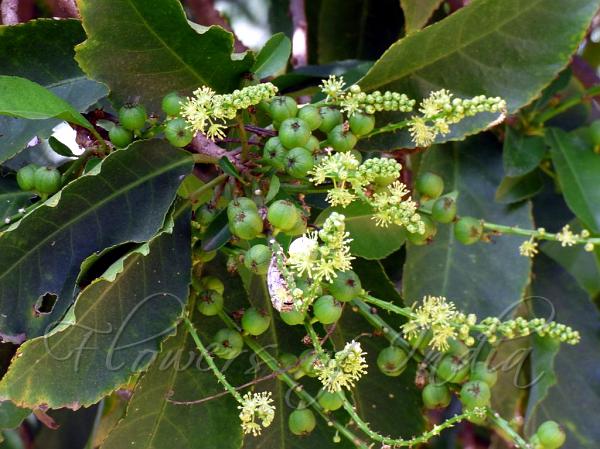|
| Croton Tree |
|

|

| File size | 226318 |
| Original date | 11/11/14 12:57 PM |
| Resolution | 1024 x 768 |
| Flash | Flash did not fire, auto |
| Focal length | 38.92mm |
| Exposure time | 1/60s |
| Aperture | 5.5 |
| Focus Distance | |
| Metering Mode | Multi-segment |
| Camera make | Panasonic |
| Camera model | DMC-FZ70 |
| Sensor type | OneChipColorArea |
|
|
|
|
Photo: |
Botanical name: Croton persimilis Family: Euphorbiaceae (Castor family)
Synonyms: Croton elaeocarpifolius, Croton boragatch, Croton roxburghii
Synonyms: Croton elaeocarpifolius, Croton boragatch, Croton roxburghii
Croton Tree is a shrub or small tree, 2-12 m tall,
deciduous; all parts except older branchlets and leaves lepidote.
Leaves oblong, elliptic to ovate-oblong or obovate, rounded or shortly
heart-shaped at base, coarsely toothed-sawtoothed or rounded toothed
along margins, pointed to short-tapering or blunt or rounded at tip,
10-45 x 5-16 cm, leathery to firmly papery, hairless, penninerved;
lateral nerves 8-22 pairs; leaf-stalks 1-7 cm long. Flowers are borne
in 12-55 cm long clusters, sometimes unisexual. Male flowers:
flower-stalks 2-5 mm long; sepals ovate, elliptic to triangular, 2-3.5
x 1-2.5 mm; petals spoon-shaped or narrowly oblong, 2-3.5 x 0.5-1.5 mm;
stamens 10-15, 3.5-4.5 mm long. Female flowers: flower-stalks 2-5 mm
long; sepals ovate to elliptic, 2-3.5 x 1-2.5 mm; petals are
spoon-shaped to thread-like, 0.3-1.5 mm long; styles 4 - 6 mm long,
free, bifid. Capsules are nearly spherical, usually slightly intruded
at tip, 3-lobed, 8-12 mm in diameter. Croton tree is found in sub
Himalayan tracts or warmer parts or in rain forests or deciduous
forests or scrubs, up to 1300 m altitude, in Uttarakhand, Bihar,
Jharkhand, West Bengal, NE India, Orissa,
Madhya Pradesh, Andhra Pradesh, Karnataka, Kerala and Tamil Nadu. It is
als found in Sri Lanka, Nepal, Bhutan, Bangladesh, Myanmar, SW China,
Indo-China and Thailand. Flowering: October-December.
Medicinal uses: The root bark is a remedy for
chronic enlargement of liver. Powdered root bark taken orally in
chronic hepatitis and applied externally to sprains, bruises and
rheumatic swellings. The root, bark and seeds are drastic purgative and
poisonous in large doses. Oil from the seeds, which forms a substitute
for croton oil (from C. tiglium), often used as insecticide in N.E.
India.
The root bark is a remedy for
chronic enlargement of liver. Powdered root bark taken orally in
chronic hepatitis and applied externally to sprains, bruises and
rheumatic swellings. The root, bark and seeds are drastic purgative and
poisonous in large doses. Oil from the seeds, which forms a substitute
for croton oil (from C. tiglium), often used as insecticide in N.E.
India.
Medicinal uses:
 The root bark is a remedy for
chronic enlargement of liver. Powdered root bark taken orally in
chronic hepatitis and applied externally to sprains, bruises and
rheumatic swellings. The root, bark and seeds are drastic purgative and
poisonous in large doses. Oil from the seeds, which forms a substitute
for croton oil (from C. tiglium), often used as insecticide in N.E.
India.
The root bark is a remedy for
chronic enlargement of liver. Powdered root bark taken orally in
chronic hepatitis and applied externally to sprains, bruises and
rheumatic swellings. The root, bark and seeds are drastic purgative and
poisonous in large doses. Oil from the seeds, which forms a substitute
for croton oil (from C. tiglium), often used as insecticide in N.E.
India. | Identification credit: Aarti Khale | Photographed in Lalbagh, Bangalore. |
• Is this flower misidentified? If yes,